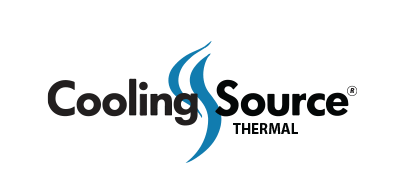Yes! Heatsinks for every challenge
Heatsinks for every challenge. Sure! Heatsinks play a crucial role in cooling electronic devices by dissipating heat generated during their operation. Designing heatsinks for different challenges requires considering various factors such as thermal conductivity, size limitations, airflow conditions, and material selection. Here are some examples of heatsink designs for different scenarios:
Standard Air-Cooled HeatSink: For general-purpose cooling, a traditional air-cooled heatsink can be used. It consists of a metal base (usually aluminum or copper) with fins attached to it. The fins increase the surface area for better heat dissipation, and natural or forced convection carries away the heat. The size and fin density can be adjusted based on the heat load and available space.
High-Power HeatSink: When dealing with high-power devices like high-performance CPUs or power amplifiers, a more robust heatsink is required. These heatsinks often feature a larger surface area, denser fins, and higher thermal conductivity materials such as copper. Additionally, heat pipes or vapor chambers can be incorporated to enhance heat transfer efficiency.
Compact HeatSink: In space-constrained applications, where size is a limitation, compact heatsinks are used. Heatsinks for every challenge, these heatsinks employ various design techniques to maximize surface area while maintaining a small footprint. Examples include stacked fin arrays, folded fin designs, or heatsinks with pin arrays. Materials with high thermal conductivity, like copper or aluminum alloys, are commonly used.
Liquid-Cooled HeatSink: Liquid cooling offers higher efficiency than air cooling, making it suitable for applications with extreme heat loads or limited airflow. A liquid-cooled heatsink consists of a base plate, often made of copper, with microchannels or tubes. The heat generated is transferred to a coolant (usually water) flowing through these channels, which is then cooled using a radiator or other cooling methods.
Active HeatSink: In situations where natural convection is insufficient, active cooling techniques can be employed. Active heatsinks incorporate fans or blowers to enhance airflow over the heat sink, providing better cooling performance. These heatsinks can be designed with a combination of large fins and strategically positioned fans to optimize heat dissipation.
HeatSink for LED Lighting: LEDs generate heat, and if not managed properly, it can affect their performance and lifespan. Heatsinks for LED lighting are specifically designed with a focus on efficient thermal dissipation. They often feature a combination of heatsink fins, heat pipes, and thermal interface materials to extract heat from the LED source and dissipate it efficiently.
HeatSink for Automotive Applications: Automotive electronics operate in harsh environments with limited space. Heatsinks for every challenge, heatsinks for automotive applications need to withstand vibrations, extreme temperatures, and exposure to contaminants. They are typically designed with robust materials, optimized fin geometries, and efficient cooling mechanisms to ensure reliable operation.
These are just a few examples of heatsink designs for different challenges. The design process may involve simulation tools, thermal analysis, and prototyping to ensure optimal performance in specific applications.
Engineered Support
As part of design work, our engineers apply advanced 3D modeling. Also, we are using cutting-edge CFD tools to optimize your heat transfer project. In addition, we provide our customers with a complete cooling solution to meet specific requirements in a timely and cost-effective manner.
Also, you can count on our Mechanical Engineers to assist with design change and reduce manufacturing costs.
Heatsinks for every challenge, our fully equipped lab is available to validate your designs, test, and inspect.
The CSI team can help you meet tight schedule requirements while focusing on your business’s core competencies.
Also, we stand by, ready to support you from concept to production globally.
We ensure secure facilities, traceability, and document control.
Call 925.292.1293 or e-mail us today to see what your options are. We feel confident that you will love our products, competitiveness, engineering support, and customer service during the sale and afterward.




